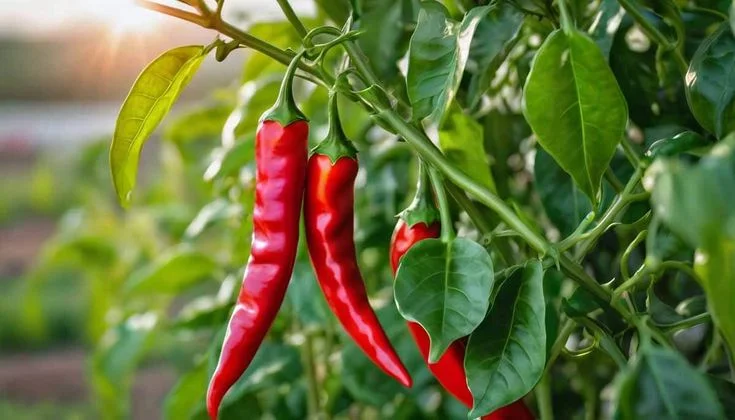When it comes to growing vibrant, productive, and flavorful peppers, fertilizing hot pepper plants correctly makes all the difference. These fiery vegetables demand a careful balance of nutrients to thrive, produce abundant fruit, and maintain strong immunity against pests and diseases. While sunlight and water are crucial, the way you feed your pepper plants directly affects their growth and spice level.
In this comprehensive guide, you’ll discover everything you need to know about fertilizing hot pepper plants—from choosing the right fertilizer to applying it at the right stage of growth.
Why Fertilizing Hot Pepper Plants is Important
Proper fertilization ensures that your hot pepper plants receive essential nutrients like nitrogen (N), phosphorus (P), and potassium (K). Each plays a specific role:
-
Nitrogen fuels leafy green growth.
-
Phosphorus supports root development and flower production.
-
Potassium boosts fruit quality, flavor, and resistance to diseases.
Without these nutrients, pepper plants can become weak, underdeveloped, and unproductive. Moreover, using the right fertilization strategy helps balance plant growth—too much nitrogen leads to lush leaves but fewer peppers, while too little causes stunted development.
Best Fertilizer Types for Hot Pepper Plants

Organic Fertilizers
-
Compost and Manure: Rich in micronutrients and organic matter, improving soil structure.
-
Bone Meal: A great source of phosphorus for root and flower development.
-
Fish Emulsion: Provides quick nitrogen for leafy growth.
Inorganic Fertilizers
-
Balanced NPK Fertilizer (10-10-10): Ideal for general growth.
-
Bloom Boosters (5-10-10): High in phosphorus, best during flowering and fruiting.
-
Potassium Sulfate: Strengthens fruit production and flavor.
Transition tip: While organic fertilizers enrich soil over time, inorganic fertilizers deliver quick nutrient boosts. A combination of both often works best.
When to Fertilize Hot Pepper Plants
Timing plays a critical role in fertilizing hot pepper plants. Here’s a stage-by-stage breakdown:
-
Seedling Stage (2–4 weeks old): Use a mild fertilizer, diluted fish emulsion, or a balanced water-soluble fertilizer at quarter strength.
-
Vegetative Growth: Once the plant has several sets of leaves, apply nitrogen-rich fertilizer to promote healthy leaf and stem development.
-
Flowering Stage: Switch to a phosphorus-rich fertilizer to encourage blossoms and fruit set.
-
Fruiting Stage: Increase potassium to enhance pepper size, flavor, and overall yield.
How to Fertilize Hot Pepper Plants

Soil Application
Mix fertilizer into the soil around the base of the plant. Water immediately afterward to help nutrients penetrate the root zone.
Foliar Feeding
Spray diluted liquid fertilizer directly onto leaves for rapid nutrient absorption. This method is particularly effective when plants show signs of deficiencies.
Side-Dressing
Add fertilizer in small amounts around plants during the growing season. This provides a consistent nutrient supply without overwhelming the roots.
Pro tip: Always follow the fertilizer package instructions overfeeding can burn roots and stunt growth. In fact, this rule applies not just to peppers but also to other species, such as eucalyptus plants, which require careful fertilization to avoid nutrient stress.
Common Fertilization Mistakes to Avoid
-
Overusing Nitrogen: Leads to bushy plants with little fruit.
-
Inconsistent Feeding: Starves plants of nutrients during critical growth stages.
-
Ignoring Soil pH: Peppers prefer slightly acidic soil (pH 6.0–6.8). Nutrient absorption decreases in poor soil conditions.
-
Neglecting Organic Matter: Fertilizer alone cannot replace the benefits of compost or well-aerated soil.
Signs of Nutrient Deficiencies in Hot Pepper Plants
-
Yellow Leaves: Nitrogen deficiency.
-
Purple-Tinted Leaves: Phosphorus deficiency.
-
Brown Leaf Edges: Potassium deficiency.
-
Stunted Growth: General lack of nutrients.
By recognizing these early signs, you can adjust your fertilization strategy quickly and effectively.
Advanced Tips for Fertilizing Hot Pepper Plants

-
Use slow-release fertilizers for consistent feeding.
-
Rotate between organic teas (like compost tea) and synthetic fertilizers.
-
Apply Epsom salt (magnesium sulfate) occasionally to boost chlorophyll production and pepper yield.
-
Mulch around plants to retain moisture and prevent nutrient leaching.
FAQs
How often should I fertilize hot pepper plants?
Generally, every 2–3 weeks during the growing season is sufficient. However, frequency depends on the fertilizer type and plant stage.
Can I use tomato fertilizer for hot pepper plants?
Yes, tomato fertilizer works well since tomatoes and peppers share similar nutrient needs. Just ensure potassium and phosphorus are adequate.
Should I stop fertilizing before harvest?
You can reduce feeding slightly before harvest to avoid excess nitrogen, which may affect flavor. Focus on potassium for better fruit quality.
Can Epsom salt replace fertilizer?
No. Epsom salt provides magnesium but lacks essential nutrients like nitrogen, phosphorus, and potassium. Use it only as a supplement.
What’s the best organic fertilizer for hot pepper plants?
A mix of compost, bone meal, and fish emulsion works well to cover all major nutrient requirements naturally.
Conclusion
Fertilizing hot pepper plants correctly is essential for healthy growth, abundant harvests, and fiery flavor. Moreover, by understanding nutrient needs at each stage—seedling, vegetative, flowering, and fruiting—you can tailor your approach for maximum results. In addition, avoiding common mistakes, paying attention to soil health, and incorporating both organic and synthetic fertilizers are crucial.
Just like with other flowering plants, such as the Ixora plant, providing the right balance of nutrients at the right time makes all the difference. Therefore, with a consistent and balanced feeding strategy, your hot pepper plants will thrive. As a result, they will reward you with vigorous growth and an impressive harvest of spicy, flavorful peppers.
Similarly, proper timing ensures better yields; meanwhile, balanced nutrients prevent deficiencies. For example, nitrogen drives leafy growth, whereas phosphorus boosts blooms. However, excess fertilizer can cause problems. Instead, aim for moderation, although adjustments may be needed depending on your soil. Finally, remember that steady care leads to long-term success.


















